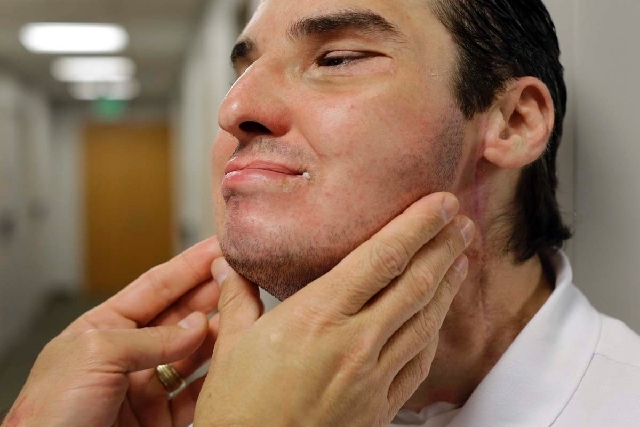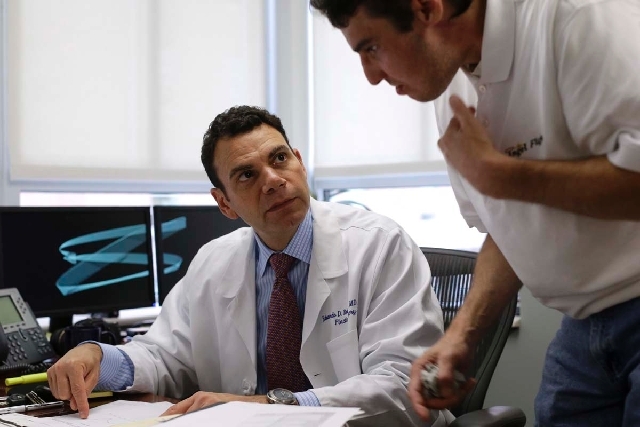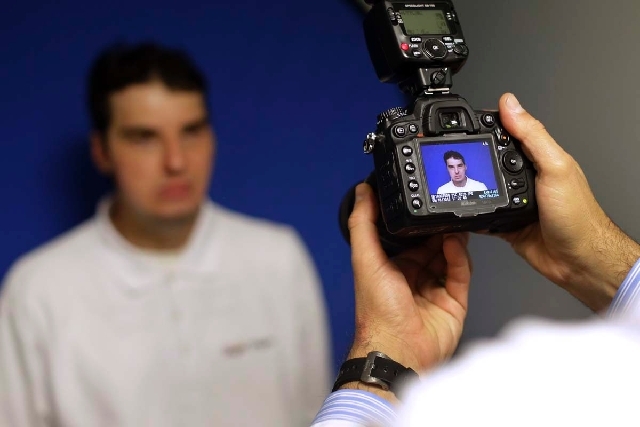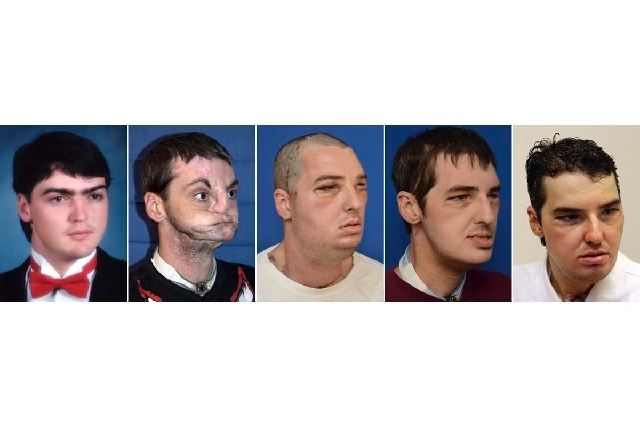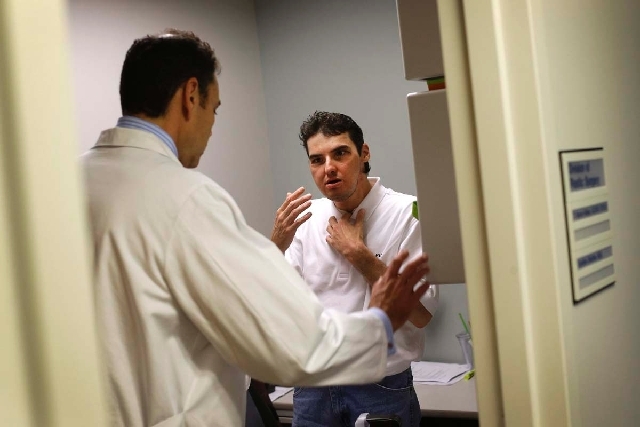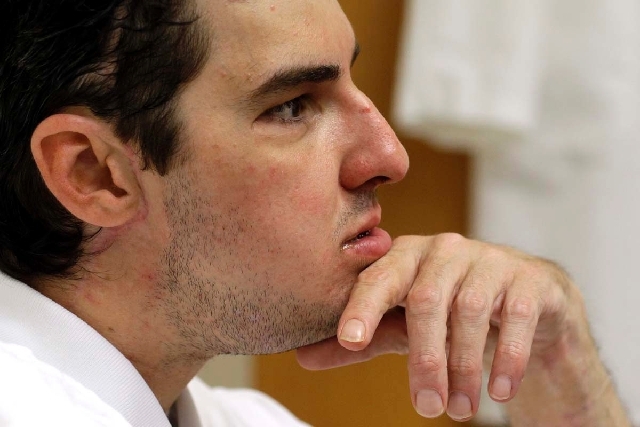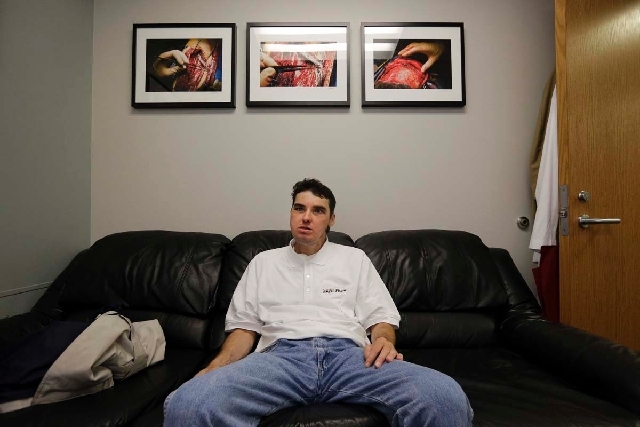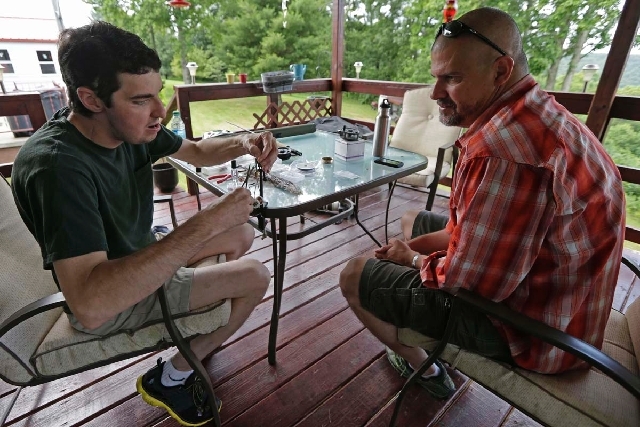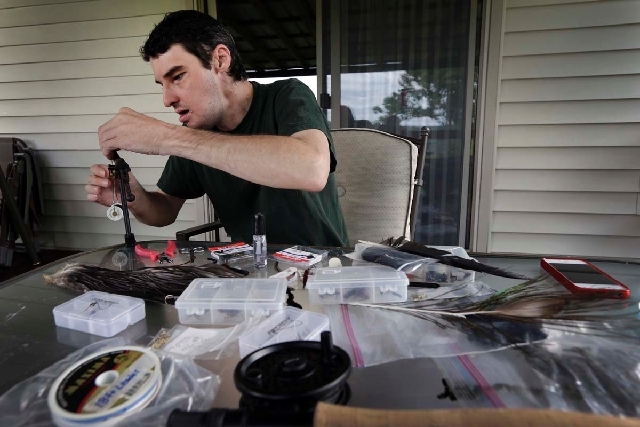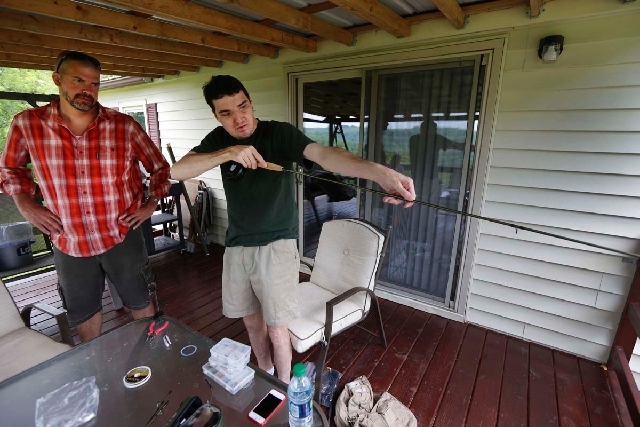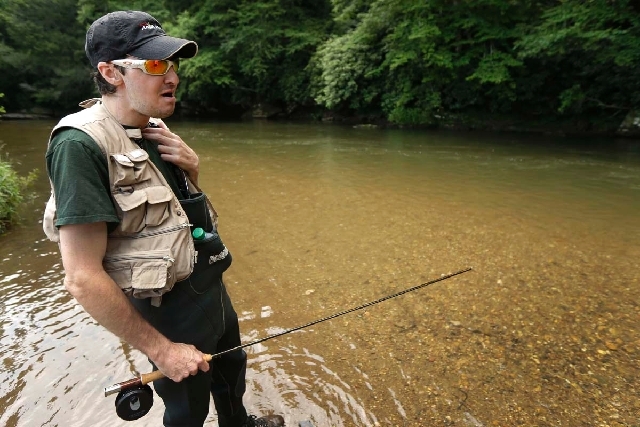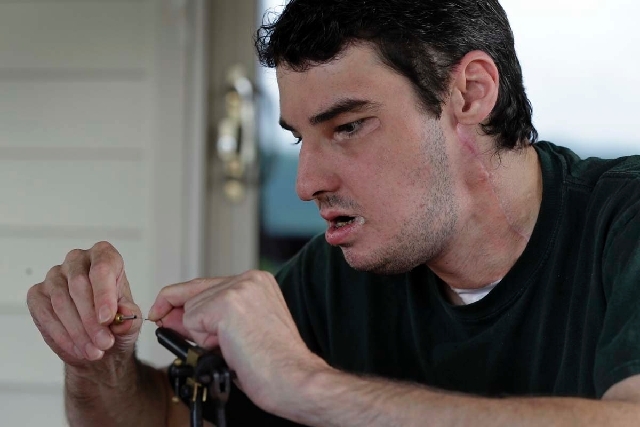Face transplant patient celebrates life in public
BALTIMORE — In the 15 years between a shotgun blast that ravaged the bottom half of Richard Norris’ face and the face transplant that ended a hermit-like life for him, the man from rural southwest Virginia faced cruelty from strangers, fought addiction and contemplated suicide.
But even if he could go back in time, he’s not sure he would erase the accident that left him severely disfigured.
“Those 10 years of hell I lived through, it has given me such a wealth of knowledge,” Norris recently told The Associated Press, one of only two news outlets granted interviews since his transplant last year. “It’s unreal. It has put some of the best people in my life.”
Now, at 38, he’s starting a new life: taking online classes in pursuit of a degree in information systems and contemplating a foundation to help defray future transplant patients’ everyday expenses during treatment.
He also has been working with a photojournalist who just completed a book about his journey, titled “The Two Faces of Richard.”
He hopes his story sends a message of hope to people in similar situations and encourages empathy in others.
“I’ve heard all kinds of remarks,” he said. “A lot of them were really horrible.”
After the 1997 accident at his home, Norris had no teeth, no nose and only part of his tongue. He was still able to taste but could not smell. When he went out in public, usually at night, he hid behind a hat and mask.
Norris had dozens of surgeries to repair his face, but eventually reached the limits of what conventional surgery could do for him, said Dr. Eduardo Rodriguez, who performed some of those operations and later led the surgical team that performed Norris’ face transplant.
Some parts of the anatomy, such as eyelids and lips, are just too complex to recreate, he noted.
“You can create a semblance of something, but I can guarantee you it’s not normal by any means.”
Just weeks after Norris was told by another doctor that there was little else that could be done for him, Rodriguez presented him with another option: a transplant.
The doctor, who is head of plastic surgery at the University of Maryland Medical Center’s R Adams Cowley Shock Trauma Center, had been following advancements in the face transplant field for years. An Office of Naval Research grant for the purpose of helping wounded warriors made it possible for him and his team to attempt their first face transplant, an operation that previously had been performed by only two other centers in the United States.
The world’s first partial face transplant was performed in France in 2005 on a woman who was mauled by her dog. Of the 27 other transplants that have followed, four recipients have died, and the survivors face a lifetime of immunosuppressant drugs, which can take a toll on their health.
Unlike most organ transplant recipients, who need their surgeries to live, face transplant patients are risking death to eliminate a non-life-threatening condition, noted Dr. Mark Ehrenreich, the psychiatric consultant to Norris’ transplant team.
Rodriguez says patients are well aware of the situation.
“If you talk to these patients, they will tell you it is worth the risk,” he said.
The team carefully lays out all of the dangers for patients: Norris’ mother, Sandra, remembers Rodriguez saying there was a 50-50 chance her son would survive the surgery.
“We looked at Richard and we told him we loved him the way he was and it didn’t matter to us, but it was his life,” she said. “That was what he wanted to do and we supported him.”
Norris said he is humbled by the gift he received from the family of 21-year-old Joshua Aversano, who died after being struck by a minivan while crossing the street. The Maryland family, which agreed to donate his organs, declined to be interviewed by the AP.
In a statement, the family said, “We are grateful Joshua’s legacy continues through the lives of the individuals he was able to save with gifts of organ and tissue donation.”
Norris said he speaks to the family regularly and keeps them updated on his life and health.
Norris’ 36-hour transplant operation is still considered the most extensive ever conducted because it included transplantation of the teeth, upper and lower jaw, a portion of the tongue and all of the tissue from the scalp to the base of the neck, Rodriguez said.
“The real main limitation ... is that patients are dependent on medication for life,” he said. The immunosuppressant medications carry risks for the patients, who don’t know how long the transplant will last. Rodriguez said if all goes well, a transplanted face could last 20 to 30 years.
For Norris, who makes daily visual checks, the risk of rejection is never far from his mind.
“Every day I wake up with that fear: Is this the day? The day I’m going to go into a state of rejection that is going to be so bad that the doctors can’t change it?”
But he said he can’t let himself worry about it too much, and he knows that he’s in good hands.
Norris has come far in the past 15 months, learning how to eat and talk again and adjusting each time his face gains more feeling. He continues with therapy, travels to Baltimore from his home in Hillsville, Va., regularly to see doctors, and still takes pain and immunosuppressant medications. He says his faith in God has carried him through it all; that he has maintained a sense of humor and remained the same person inside.
And he agrees with doctors, who dismiss a commonly held belief that face transplant patients are likely to experience an identity crisis.
“When I look in the mirror, I see Richard Norris,” he said remembering the immediate connection he felt with his new face.
The bigger issue for Norris is being able to appear in public again. Facial disfigurement tends not to engender sympathy, leaving patients feeling shunned, Ehrenreich noted.
“Unfortunately, with severe facial disfigurement, people recoil and make comments they would never make to someone in a wheelchair,” he said. The transplant marks “such a significant improvement, that they’re welcome to be in public.”
Since his surgery, Norris says the gawking has disappeared.
“When I was disfigured, just walking the sidewalk, I was surprised that more people didn’t walk into telephone poles or break their necks to stare at me,” he said.
“Now ... there’s no one paying attention. Unless they know me personally, they don’t know I am a face transplant patient. That right there is the goal we had.”



